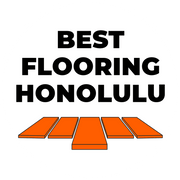Spiked shoes
Understanding Spiked Shoes
Purpose
Spiked shoes are essential in sports like track and field, cross country running, soccer, and golf. They provide enhanced traction on various surfaces, aiding athletes in achieving better performance.
Design Elements
The unique design of spiked shoes includes spikes, typically made of metal or ceramic, strategically placed on the sole to grip the ground. The upper part is lightweight for agility, while the sole is rigid for stability.
Types of Spikes
-
Pyramid Spikes: These spikes have a pyramid shape, offering excellent grip on soft surfaces like grass or dirt.
-
Needle Spikes: Needle spikes are longer and provide superior traction on tracks and hard surfaces.
-
Christmas Tree Spikes: With a tree-like design, these spikes offer a balance between grip and durability, suitable for various terrains.
Key Benefits of Spiked Shoes
Traction Enhancement
Spiked shoes offer improved traction on various surfaces, including grass, dirt, and track. The strategically placed spikes help athletes maintain stability and grip while running or making quick turns. This enhanced traction can significantly boost performance by allowing athletes to accelerate faster and maintain control during movements.
Performance Enhancement
Athletes wearing spiked shoes often experience a noticeable enhancement in their performance. By providing a secure grip on the ground, these shoes enable runners to push off more powerfully, resulting in faster sprint times and improved overall athletic performance. The lightweight design of spiked shoes also contributes to increased speed and agility on the track.
Injury Prevention
One of the key benefits of spiked shoes is their potential to prevent injuries during athletic activities. The superior traction offered by the spikes reduces the risk of slipping or sliding, especially in wet or slippery conditions. This added stability can help athletes avoid ankle twists, falls, and other common injuries associated with running or sprinting.
Choosing the Right Spiked Shoes
Sport Consideration
When selecting spiked shoes, it's crucial to consider the specific sport or activity you will be engaging in. Different sports require varying levels of traction and stability, so choosing spiked shoes tailored to your sport can significantly enhance your performance. For example, track and field athletes may opt for pyramid spikes for sprinting, while cross country runners might prefer needle spikes for better grip on uneven terrains.
Spike Configurations
Evaluate the different spike configurations available to cater to your specific needs. Spike lengths vary, with shorter spikes offering better traction on hard surfaces like tracks, while longer spikes provide more grip on soft ground. Some shoes come with removable spikes, allowing you to customize the configuration based on the terrain you'll be running on. Understanding these configurations can help you optimize your performance and prevent injuries during sports activities.
Fit and Comfort
Proper fit and comfort are paramount when selecting spiked shoes. Ill-fitting shoes can lead to discomfort, blisters, or even injuries during training or competitions. Ensure that the shoes provide adequate support, especially around the heel and arch areas. Prioritize comfort to prevent distractions and focus fully on your performance. Trying on different sizes and styles before making a purchase can help you find the perfect fit for your feet.
Care and Maintenance Tips
Cleaning
To clean spiked shoes, use a soft brush to remove dirt and debris. Wipe them with a damp cloth and mild soap. Avoid soaking them in water to prevent damage.
Storage
Store spiked shoes in a cool, dry place away from direct sunlight. Keep them in a shoe bag or box to prevent dust accumulation. Avoid storing them near heat sources.
Inspections and Repairs
Regularly inspect the spikes for wear and tear. Replace any damaged spikes promptly to maintain traction. Check the shoe's overall condition for signs of damage.
Frequently Asked Questions
Are spiked shoes suitable for all types of sports?
Spiked shoes are specifically designed for sports that require traction on surfaces like track and field, golf, and soccer. They may not be suitable for sports like basketball or tennis, where the traction needs differ.
How do I choose the right size of spiked shoes?
To ensure a proper fit, measure your feet according to the manufacturer's guidelines. Consider trying on different sizes and styles to find the most comfortable fit, ensuring your toes have enough room while still feeling secure.
Can spiked shoes damage indoor flooring?
Yes, spiked shoes can damage indoor flooring such as hardwood, tile, or gym mats due to their sharp spikes. It is recommended to only use spiked shoes on designated outdoor surfaces to prevent any damage to indoor flooring.
How often should I replace my spiked shoes?
The lifespan of spiked shoes depends on factors like usage frequency and terrain conditions. As a general guideline, consider replacing them after 300-500 miles of running or when you notice significant wear and tear on the spikes for optimal performance and safety.
Are there any specific cleaning tips for spiked shoes?
After each use, remove dirt and debris from the spikes using a brush or cloth. Avoid soaking them in water or using harsh chemicals. Let them air dry completely before storing them in a cool, dry place to prevent mold growth and maintain their quality.


